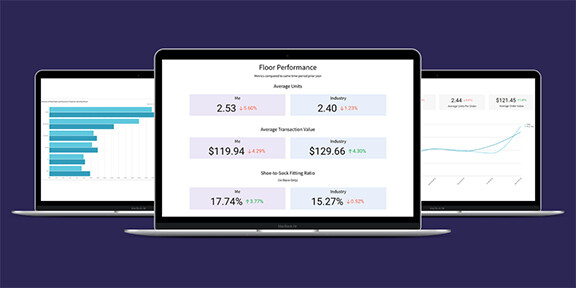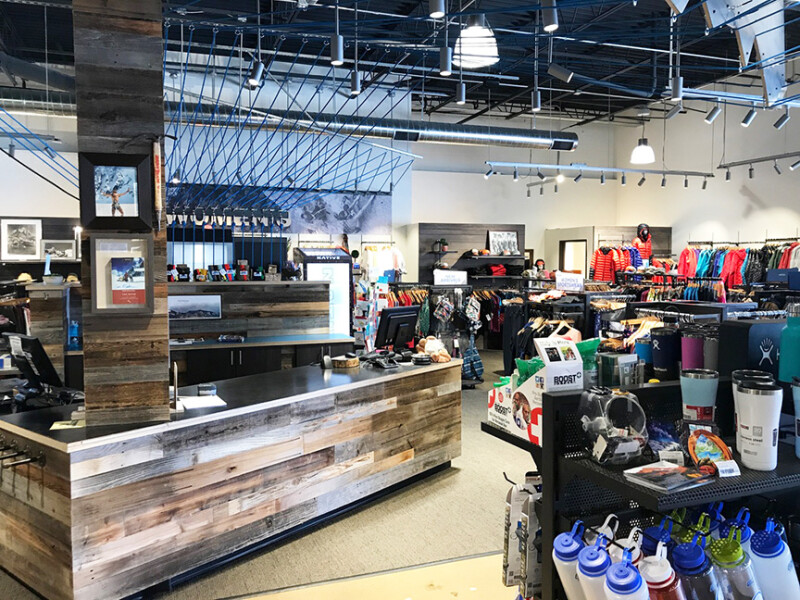I’m not really a data guy…” That’s the comment that kept showing up in my conversations at The Running Event last year and at 2023 Runchella.
While our team at Upper Quadrant is very much a team of data-oriented people, most running store owners seem quick to make sure we know they aren’t at that level. It’s not that they’re anti-data, it just simply isn’t where they feel most comfortable. I get it.
It reminds me of another phrase you’re probably used to hearing: “I’m not really a runner...”
How many of your customers walk through the door and, before they say anything else, utter those five words? Whether it’s in your store’s name or not, your emphasis on running is inescapable, so people feel the need to make sure they’re welcome.
Of course, those in the running industry know that the “real runner” is as mythical as Bigfoot. After all, where would you draw that line? Is it a seasoned marathoner or a charity 5K participant? Someone who runs every day or only occasionally? Your store greets and treats all these people the same way: with a smile and helpful service. In fact, even if a customer is adamant that they don’t run for any reason, I’ll bet my new Saucony Peregrines that you can convince that person they are welcome inside your doors.
The truth is running store owners distance themselves from computer expertise in the same way your customers distance themselves from running. In their mind, there are the data-shy folks and the data-savvy folks, with not much room in between. I see it in comments like:
• I’m not a data geek.
• I’m not that great with computers.
• I don’t know Excel formulas.
If that’s where you find yourself today, here’s what you need to know. Data is not an all-or-nothing thing. It can’t do everything you can, and despite all the AI hype these days, it will never be able to. But there are some ways it can help save you a ton of time and increase your revenue.
Data is your friend.
You may feel data-shy right now, but I’m a big believer that you don’t need a Ph.D. to reap the benefits of data in your business.
To that end, here is a quick overview of the three main types of data we see in retail: Transactions, Products and Customers. I’ve also included some tips for applying each that I’ve learned during my time in the running industry.
Transaction Data — How Much?
Transactions data is the type owners probably see most often because it includes things like Average Units Per Transaction, Average Transaction Dollar Value and Email Capture Rate. Chances are your POS system already gives these numbers for your stores over any time period.
Metrics like this don’t give much detail or specifics on what items were purchased — just numbers, dollars and percentages. That simplicity is what made them so widespread, even before the RIA’s Weekly Benchmarks emails began. They’re averages and, because more is almost always better here, they’re very easy to interpret.
Many owners use these datapoints as “yes or no” checks: Are we improving or not? Watching the trend of metrics like these make them a quick-and-dirty method to make sure your stores are moving in the right direction in less than two minutes.
Most of the time, there’s not much change week to week, causing some people to stop checking them at all. But those people who make it a repetitive habit know that the value is in the habit itself. Over time, even those who are “not a data person” become familiar with what is normal for each.
When the day comes that something doesn’t look right, there’s no need for a heavy analysis: Those two consistent minutes are suddenly worthwhile because you’re quick to spot a difference … even if you don’t consider yourself a data nerd!
Quick checks for your stores help identify a problem, but there’s no reason to stop there. If you can break down these metrics by salespeople like you can in UQ Cadence, that is where the greatest value of transaction data is found. Tracking the growth of individual employees allows you to zero in and actually effect change in your stores.
In other words, when you use store and individual transaction data together, you have hard facts that not only identify a problem, but also propose a solution.
How do people in the run specialty industry do this? The most popular way is the buddy system: If someone is lagging in an area, boost their training by having them shadow the person on your staff who is best at it. Alternately, more public methods like posting everyone’s numbers from last month as bulletin board material and “most improved” awards can help game-ify sales for a competitive staff.
Just be sure to do so in an authentic way that encourages staff to lift each other up. That shift in mindset may be what turns someone who is afraid of coming off as “too salesy” into someone who looks to meet the unique need of each customer who comes through the door.
Product Data - Which One?
The second most used data in retail is for specific products. Inventory managers are keenly aware of how questions like these simply cannot be answered without an SKU, UPC or some sort of product identifier. Unlike transaction data, this goes beyond “Did that order include an insole?” to asking “Which insole did they buy?” specifically.
These are not always straightforward to interpret. Case in point: Having too much inventory on hand can be as limiting to your business as running out of a top seller. The question is not whether you use product data today, but how a data-shy person can leverage it best.
For that we have to ask two questions: How complete is your product database, and do you have time to apply what you learn?
The effort you put into maintaining accurate product data determines how much useful information you can get out of it. To maintain a perfect product database as a small business, there are usually Excel formulas involved, not to mention endless possible aspects to track. This is what scares people a lot about this kind of data: Without knowing where to stop, a lot of data-shy people choose not to start.
My recommendation for your product database is to forget about perfection. Start with something manageable and focus on getting it accurate. Tracking Brand, SKU, Size, Product Name and Main Category (shoes vs. socks) for each UPC will allow you to answer most product questions you will ever have.
This is preferable to trying to tackle it all at once because it is immediately useful rather than a never-ending job. You can do all of this without any special formulas, sometimes right inside your POS system. Over time, you can choose to gradually add other aspects like Width, Road vs. Trail Shoes and Color.
On the other hand, inventory managers are (or should be) using sales and inventory data by product to place orders and many are naturally more data-inclined. They would love to spend more time analyzing what sells and keeping your inventory fresh.
Sadly, most of their time is spent treading water by mindlessly typing up orders. You can make better use of their skills and interest with a vendor-managed process: You send your rep their brand’s inventory and sales data and they send back a proposed order.
Don’t worry, the buyer is still 100 percent necessary in this process. They review the proposal and (thanks to the freed-up time they had to do analysis) make changes as they see fit. Shameless plug: UQ Cadence has a free and automated solution that retailers use to do just that.
But no matter how you do it, giving the vendor more information to propose orders saves your buyer time and lets them focus on more of what they enjoy. The vendor benefits, too. They feel they are getting special treatment because you are making sure they do not run out of stock.
Customer Data — Who Buys?
Finally, we have customer data. This type data is both the hardest to get and the hardest to make sense of, but for stores who want to reach more of their community, it also holds the highest upside.
Knowing a customer’s gender, age and zip code can give important insights about who your best and most common shoppers are. The best way to gather this is organically throughout the fitting process. Ask and make a mental note of their information in the midst of it, then you can then add it into the system immediately after they leave. You’ll preserve their great experience rather than taking too long at check out and you’ll be amazed how quickly you have basic customer demographics.
Of course, what you really want are customer purchase specifics: Product and brand preferences, average spend, time between purchases — these are holy grail insights that help you personalize emails and make strategic decisions.
They are also incredibly complicated to calculate. In fact, even a self-described data whiz cannot compute all of this in Excel for thousands of different people. Despite its upside, retailers feel they are forced to mostly ignore it because they know they don’t have the time or expertise.
I’m here to tell you that you shouldn’t give up yet. The truth is, looking for deeper insight from customer data is never used for a “yes or no check.” You’re probably looking to leverage it for more personalized customer emails in a full-blown marketing initiative. Therefore, invest in an all-in-one system to do that for you. Marketing platforms and email marketing services like those provided by Upper Quadrant roll the data-crunching part and the send-the-emails part together. This way you can finally make use of that super-valuable customer data without becoming a data expert.
Keep It Simple
No matter what data you’re dealing with, I hope you’ll remember two things. First, that data is never perfect. No single number will ever be able to express all the nuances of run specialty that you understand. But if it’s close enough, it can help confirm or challenge your ideas so that your business is always moving forward.
Finally, don’t think of yourself as data-shy. We are on a mission to help you focus on your business while working both faster and smarter (you can leave the geeking-out to the experts).
Being a real runner isn’t about qualifying for the Boston Marathon. Being data-savvy is not about advanced degrees or trying to track all metrics all the time. It’s about simply starting the journey, gaining confidence one step at a time. And that is a welcome mindset in every running store.
About The Author
Coleman Conley has spent six years in the run specialty industry. As a data analyst, he worked with everyone from managers to marketing to vendors to turn unorganized data into action. Today he is the Footwear Product Manager for Upper Quadrant’s retail platform, UQ Cadence.






